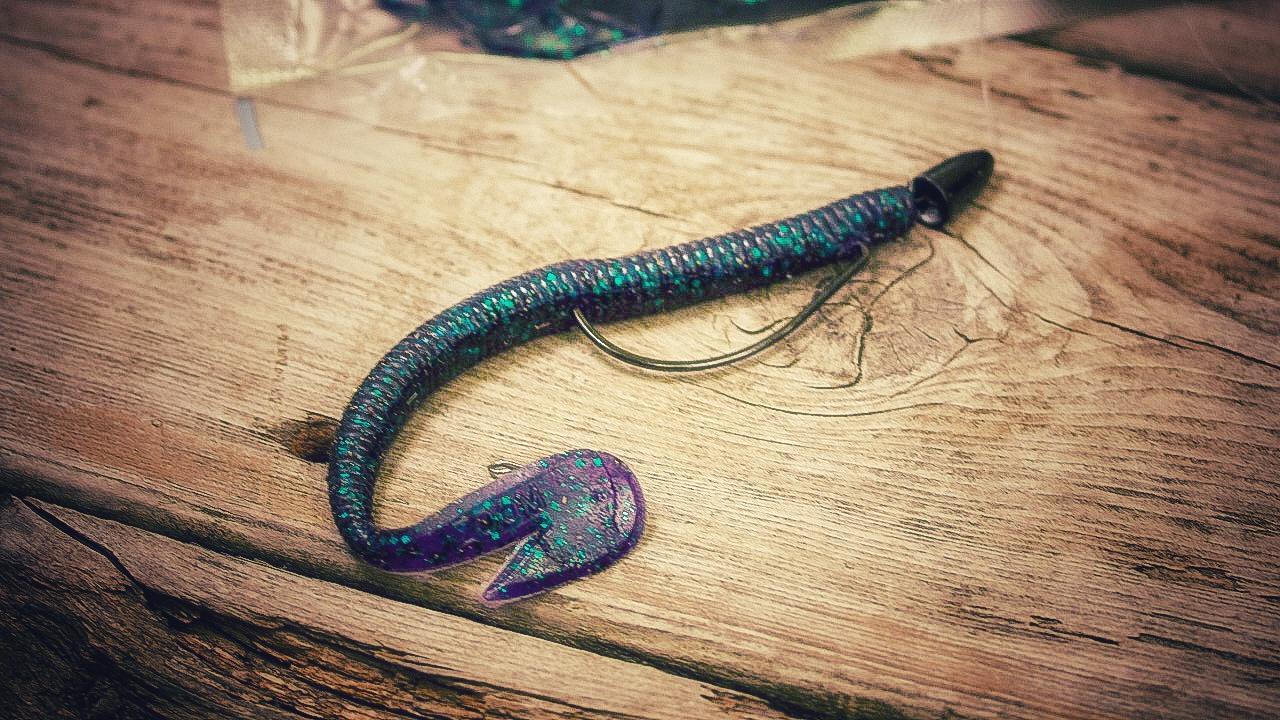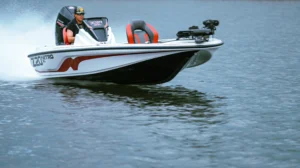Soft-plastic worms come in countless shapes, sizes and actions and when rigged on a standard Texas rig, some are more versatile than others.
A go-to presentation for Wired2fish’s Walker Smith is a Zoom Ultravibe Speed Worm worked with a slow swimming retrieve. The unique tail of this worm gives it a subtle kicking motion that provides a new look to pressured fish.
Walker begins his retrieve with a long cast allowing the bait to sink to the bottom. Once on bottom, a slow reel lets the bait deflect off of cover such as stumps and deadfalls. This can make it difficult to detect bites at times, but Walker explains there is a very distinct sensation when a fish picks it up and you need to pay close attention to your line and the feel of the retrieve to know when to set the hook.
A disruption in the feel of retrieve such as a solid bump or a jump in the line will signal a bite. Double check this by giving the fish time to eat it while paying close attention to the sensation on a tight line. Deliver a long, sweeping hook set when you’re sure the fish has gotten a chance to eat the bait and that will ensure the fish becomes hooked without bending the hook or ripping it from the fish’s mouth.
The swimming retrieve can be used as a search bait and once you’ve found what fish are holding on, the bait converts instantly into a flipping and pitching presentation around specific pieces of isolated cover. Walker uses a medium to medium-heavy rod with a moderate action for bite detection and long-distance, sweeping hooksets. He pairs this with a high-speed reel to catch up to fish that may bite and swim towards the boat. Fluorocarbon is a must around wood cover and Walker goes with either 15- or 17-pound test.
FEATURED PRODUCT:
- Zoom Ultravibe Speed Worm
- Lazer Trokar EWG Worm Hook
- Eagle Claw Tungsten Worm Weight
- Eagle Claw Rubber Bobber Stops
- Skeet Micro Honeycomb 7′ Med Light Swimbait Casting Rod
- Seaguar AbrazX Fluorocarbon Line, 15lb
- Costa Del Mar Permit Sunglasses
- Wired2Fish Structured Mesh Back Hat
- Lew’s Casting Reel (discontinued Speed Spool)












